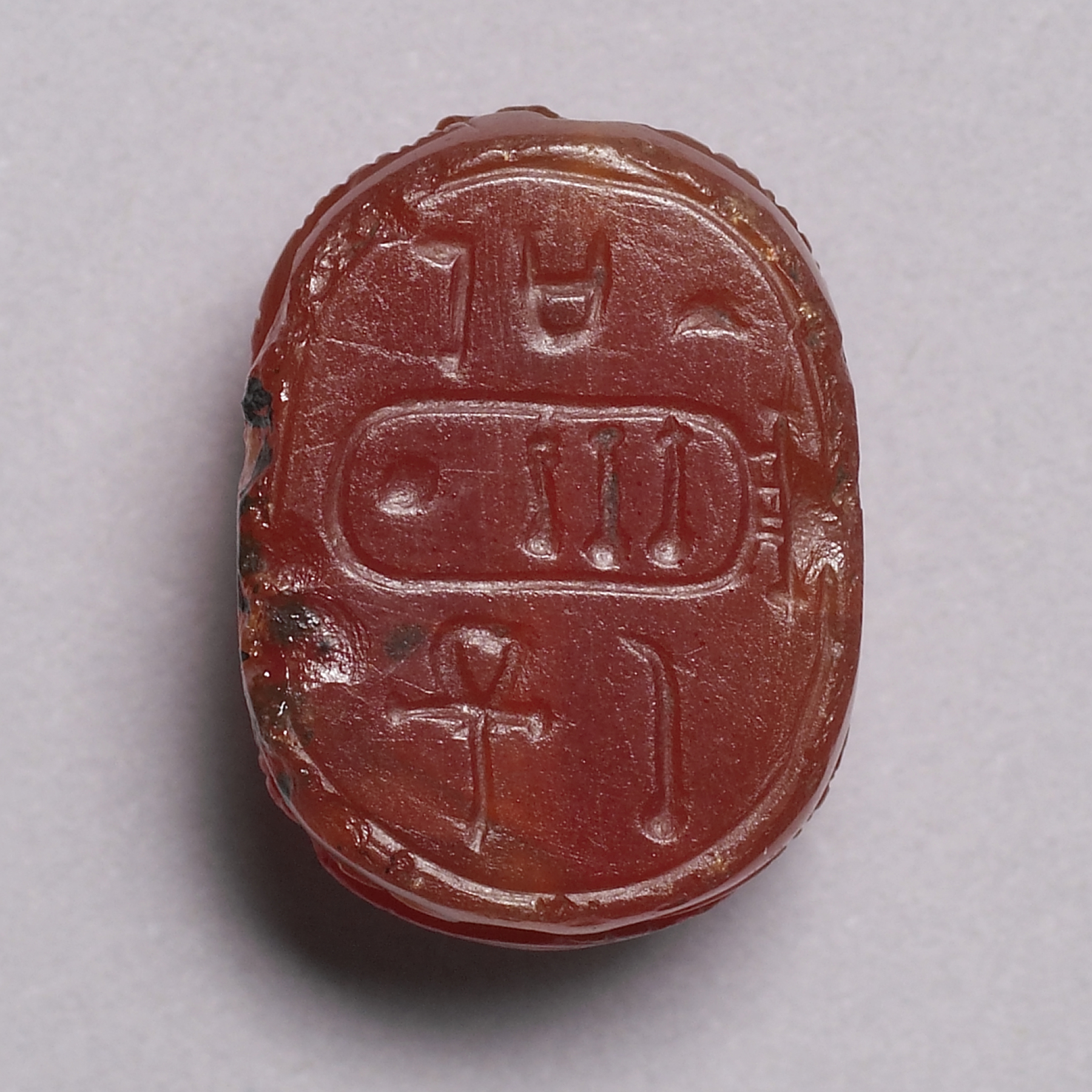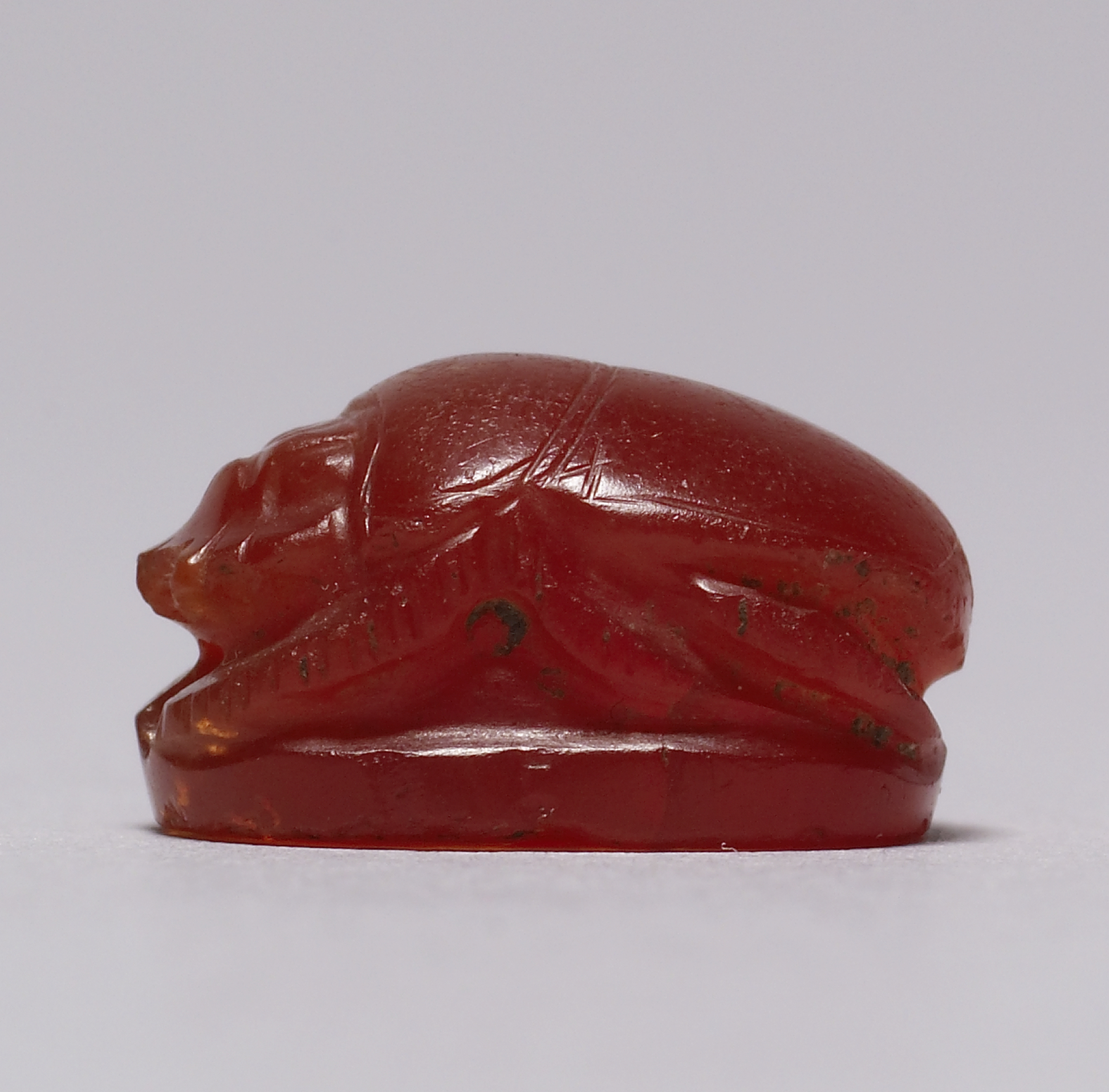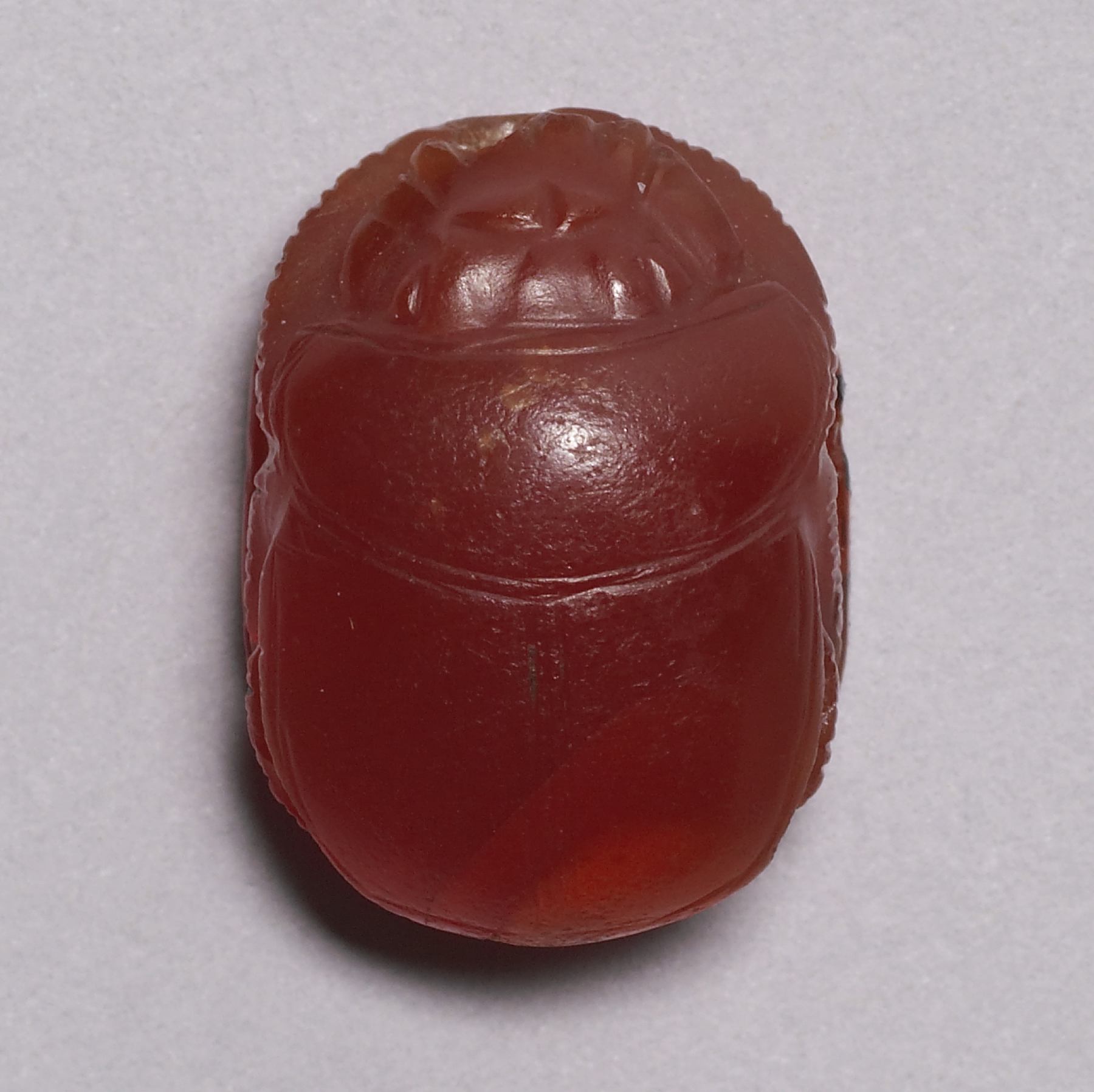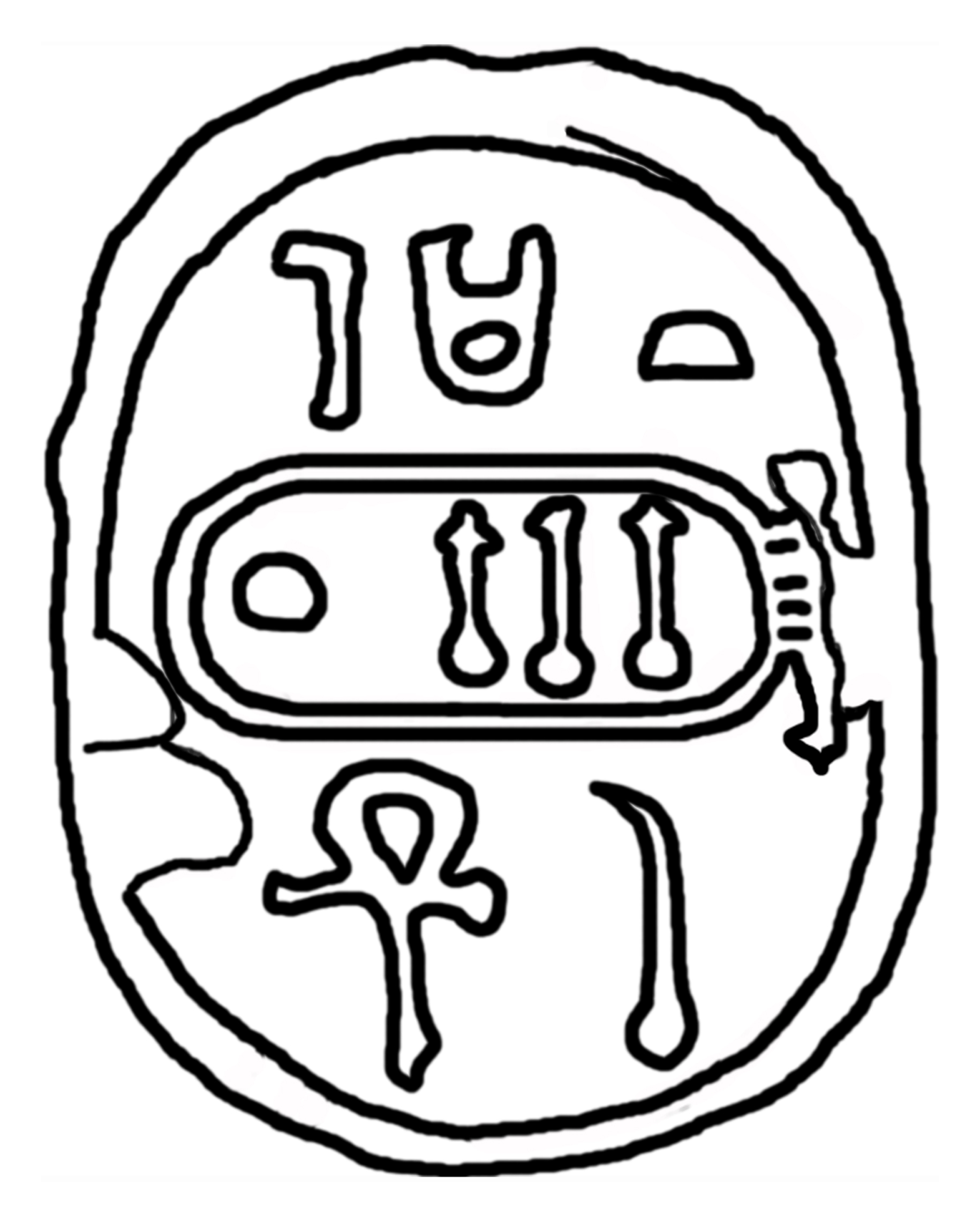Scarab of Neferu-Re
(Ancient Egypt and Nubia )
The ancient Egyptians believed that the dung beetle, the Scarabaeus sacer, was one of the manifestations of the sun god. Representations of these beetles were used as amulets, and for ritual or administrative purposes.
This small, red carnelian scarab has a vertically arranged bottom inscription, which consists of three lines of right reading text with a cartouche in the center. An oval line frames the inscription. The text contains the name and title of crown princess Neferure, daughter of the female pharaoh Hatshepsut, and a formula whishing her life. The highest point of the back is the pronotum (dorsal plate of the prothorax). Pronotum and elytron (wing cases) have fine single borderlines and double separations lines. The line flow almost regular, only the partition lines between pronotum and elytron overlap slightly. The trapezoidal head is flanked by quarter-ovoid eyes. The trapezoidal side plates have curved outer edges, and the clypeus (front plate), which is very large in comparison to the head, has four frontal serrations and a central base notch. The extremities show natural form and vertical hatch lines for the tibial teeth and pilosity (hair), the background between the legs is deeply hollowed out. The oval base is symmetrical.
The scarab is longitudinally pierced, and was originally mounted or threaded. It functions as a name seal and user-individualized amulet of crown princess Neferure. The scarab should secure the individual existence (wish formula: "who may live"), divine relation (title: "divine consort"), and royal status (cartouche) of the crown princess, and the red color her magic protection. The material, carnelian, was especially used for protective amulets and the Egyptians believed that it would intensify the magical potency. The scarab could have been a personal amulet of the princess, but, it is also possible that it was given to a private person to guarantee the crown princess' patronage. Scarabs made of dark red carnelian were popular for the female members of the court in early 18th Dynasty.
Inscription
Provenance
Provenance (from the French provenir, 'to come from/forth') is the chronology of the ownership, custody, or location of a historical object. Learn more about provenance at the Walters.
Henry Walters, Baltimore [date and mode of acquisition unknown]; Walters Art Museum, 1931, by bequest.
Geographies
Egypt (Place of Origin)
Measurements
H: 9/16 x W: 7/16 x D: 3/8 in. (1.4 x 1.1 x 0.9 cm)
Credit Line
Acquired by Henry Walters
Location in Museum
Accession Number
In libraries, galleries, museums, and archives, an accession number is a unique identifier assigned to each object in the collection.
In libraries, galleries, museums, and archives, an accession number is a unique identifier assigned to each object in the collection.
42.56














